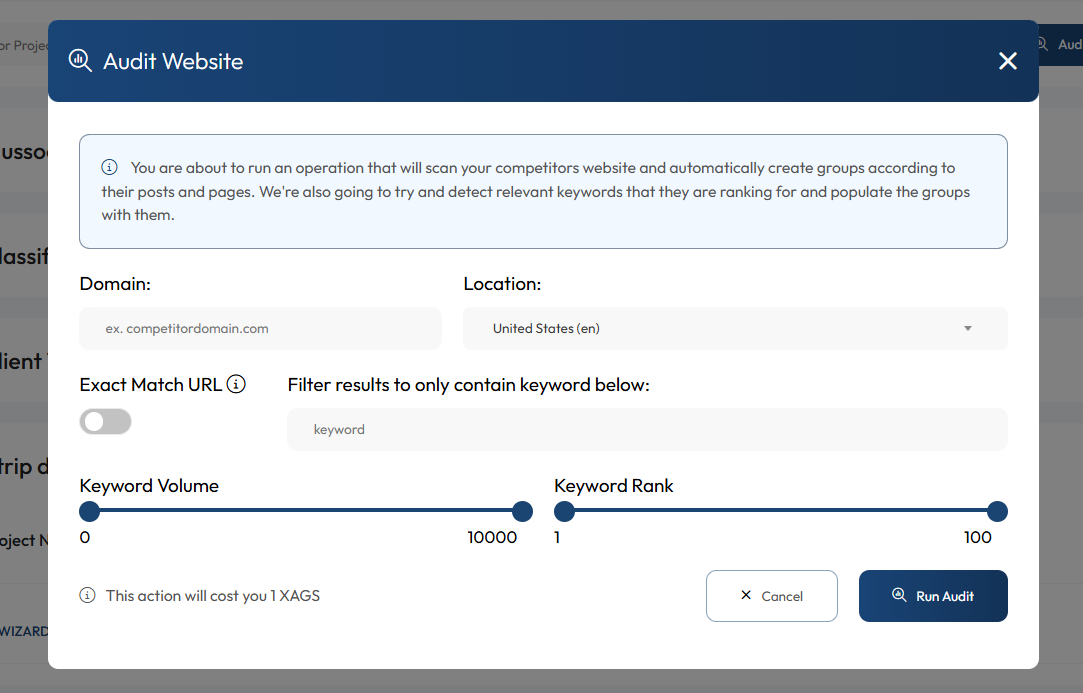Getting your lead gen site off the ground and ranking is a great achievement, but people often forget to research additional opportunities for high-traffic keywords once their main ones are ranking.
The great thing about finding additional keywords to target is that it often doesn’t take long at all to see page 1 rankings for them.
But there’s a tricky part to this.
Finding and choosing the right keywords should be based on hard data and not guesswork.
In this post, I’m going to show you exactly how I keep scaling my lead gen sites to get more traffic and leads – ultimately allowing me to collect higher rent or sell more leads.
Where Do I Look For New Keyword Clusters?
The only place I ever go looking for new keyword clusters is on page one of the SERPs. And I have a very simple and proven process for it.
More on that shortly.
Looking at the SERPs is the only way that you can find out for sure what Google actually likes and prioritizes for search terms.
And if you can find relevant keywords that are associated with competitor sites at the top of page 1 that you’re not targeting yet, then you can easily open up new opportunities.
Why Are Competitor Sites Like Gold Mines?
Competitor sites that are already ranking and getting traffic are gold mines for SEO data that you can directly tap into.
These site owners have probably spent a lot of time on research and content development to figure out what will drive traffic.
So, instead of guessing or experimenting with a range of different keywords, you can simply copy what’s already working.
By carefully analyzing ranking keywords, the search volume, and competition data, and then comparing the information to the pages you already have, you’ll easily find new clusters.
And I’ll show you exactly how I do that.
How To Find New Keyword Clusters With Xagio
You’ll find many people in the SEO community talk about using tools like SEMRush, aHrefs, Moz, and countless others – but all those tools have one major downside.
You end up with a huge list that you then have to manually analyze and filter. And the list always contains keywords that you probably don’t need to be interested in.
That mind-numbing work is not a good use of your time, and it’s why I created Xagio in the first place.
Here’s how Xagio lets you get all your competitors’ ranking keyword clusters in a few seconds.
Step 1: Use Xagio Audits
You’ll find many people in the SEO community talk about using tools like SEMRush, aHrefs, Moz, and countless others – but all those tools have one major downside.
You end up with a huge list that you then have to manually analyze and filter. And the list always contains keywords that you probably don’t need to be interested in.
That mind-numbing work is not a good use of your time, and it’s why I created Xagio in the first place.
Here’s how Xagio lets you get all your competitors’ ranking keyword clusters in a few seconds.
I recommend choosing a domain at the top of page 1 as it’s going to have more ranking keywords, and focus on real business websites, not directory sites.
Click the “Run Audit” button and let Xagio do all of the heavy lifting for you.
Step 2: Review The Keyword Clusters
Xagio takes about 10 seconds to complete, and you get a new project with all the ranking keywords and pages listed.
Your job now is to identify those keyword groups that you haven’t targeted on your lead gen site. This takes a few minutes to manually review, and the best thing you can do at this stage is to simply remove keywords and clustered groups that you know you’re already targeting.
The result is a list that is much easier to manage.
Now, you’re left with keyword clusters that your competitors are using to get traffic, but you’re not targeting on your site.
Just one more step left.
How To Build New Pages With Agent X
Normally, you’d have to write the content for the newly identified keyword clusters and then create a new page. That’s potentially hours of work, and if you have identified multiple new clusters, you’re facing a lot of work.
Xagio’s Agent X solves that problem, and we’ve built a great feature into Project Planner for this purpose.
Your newly created project from above has the option to launch Agent X using the keyword clusters.
Simply click the Agent X button, and you’ll jump to the keyword cluster screen. Simply double-check that all the right keyword clusters are selected and you’re ready to let Agent X take over.
It generates the pages using the same template you originally used with Agent X to set up the website, adds optimized content, completes on-page optimization, and adds schema markup.
It even adds the new keywords to the rank tracker so that you can see the results materialize within a few days.
Yup, it’s that simple and fast to keep adding new pages in a matter of minutes.
Start Tapping Into More Opportunities
Once you start using Agent X for building lead gen sites, you’ll likely end up with a significant portfolio of sites.
The temptation is to keep building new sites, and Xagio certainly makes that more scalable than ever before. But I always tell people that scaling existing assets by identifying new keywords is one of the easiest and fastest ways to drive more revenue.
Try using this technique for your ranking lead gen sites and see how big of a difference it will make on rankings, traffic, and leads.

